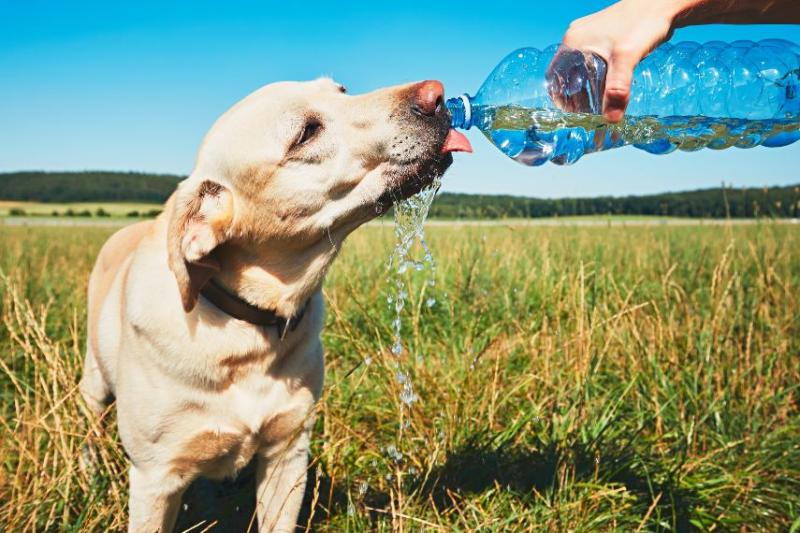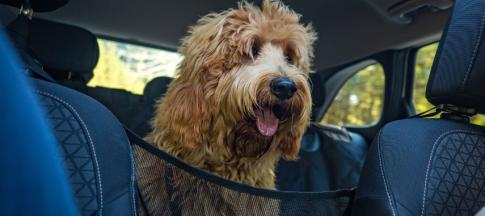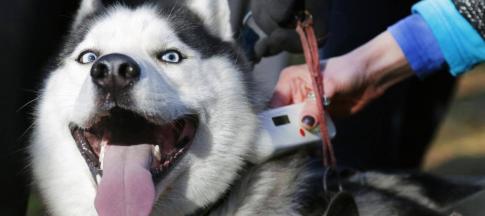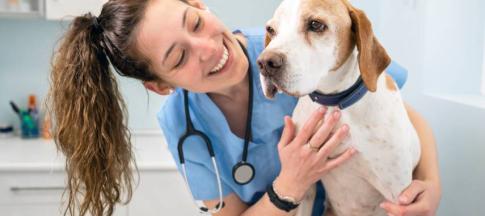
When the weather warms up, it can be difficult for your pets to escape the heat.
Here are our tips for keeping your pet safe and happy in hot weather so they can enjoy the summer.
How to take care of a dog on hot days
It's easy for dogs to overheat, as they don't sweat like humans do when they're hot. Instead, they pant and use their paw pads and nose to release heat and keep cool.
To keep them cool and happy, you should:
- Keep them hydrated – make sure they always have access to fresh water, and you could even add ice cubes to their water bowl.
- Make sure rooms are ventilated – when you’re at home, make sure your windows are open or you’re using a fan.
- Make sure they have access to shade – if you’re in the garden or outside, it’s important they have a shady spot to relax in.
- Use pet-friendly sun cream – put some sun cream on their nose, ear tips and other exposed areas of skin when they're in the sun. Avoid using human sun cream as this isn’t designed for pets’ skin.
- Set up a paddling pool – if your dog likes water and you have a garden, you could get a paddling pool for them to splash and cool down in. Just make sure they’re not in direct sunlight for too long.
Walking dogs in hot weather
On warmer days, it's best to walk your dog early in the morning or later in the evening, when the weather is cooler.
Check how hot the pavement is before you walk your dog. Black tarmac can get very hot in the sun and dogs' paw pads burn easily.
As a rule, if you can't touch it with your hand for five seconds, your dog can't walk on it without getting burnt.
Can dogs get heatstroke?
Yes. Heatstroke in dogs can come on in a matter of minutes and the symptoms only show when they're already quite unwell.
To prevent this, never leave a dog in a car on a sunny day, even if it doesn't seem very hot outside and you're only going to be gone for a few minutes.
If you’re running errands or going shopping on a hot day, it’s best to leave your dog at home.
The RSPCA found that if the temperature outside is 22°C, it'll reach 47°C in a car within an hour. This is an unbearable heat for dogs and can be very dangerous.
What are the symptoms of heatstroke in dogs?
It’s important you know the signs of heatstroke in dogs. These include:
- excessive panting
- excessive drooling
- tiredness or weakness
- vomiting
- diarrhoea
- seizures
What to do if your dog has heatstroke
If you think your dog has heatstroke, you should:
- move them somewhere cool and breezy, whether they’re able to walk or you need to carry them
- wet their fur with cool water, avoiding their head
- use a fan to cool them down
Then, you need to get them to a vet. Call your vet practise or bring them straight in.
If it’s out of hours, you may need to call a special emergency helpline or ring a different emergency vet to be seen.
What to do if you see a pet in a hot car
If you see a dog locked in a car on a hot day and are worried they might be suffering with heatstroke, the RSPCA advises that you call 999 to send someone out urgently.
Read our pets in hot cars guide to learn more about the dangers of leaving dogs in cars on hot days.
How to keep cats cool in summer
While many cats enjoy lying in the warmth of the sun, they also need a shady spot to escape the sun and relax in.
To keep your feline friend nice and cool, you should:
- Keep them inside when the sun is strongest – that’s between 11am and 3pm. If the temperature is very high, consider keeping them indoors all day until things cool down.
- Make sure your house is well-ventilated – keep windows and doors open or use fans.
- Give them plenty of cool water – and if your cat is out exploring on a warm day, put a bowl of cool water outside for them to access easily too.
- Check they’re not in your outbuildings overnight – sheds, conservatories and greenhouses can get very hot in the sun, so consider locking them when the temperatures are high to avoid your cat getting in and overheating.
- Use pet-friendly sun cream – cats can also benefit from pet-specific sun cream, especially those with lighter coloured fur.
Signs of heatstroke in cats
It’s important to be able to recognise the signs of heatstroke in cats so you can help them as soon as possible.
These signs include:
- fast breathing
- panting
- dark red or pale gums
- vomiting
- diarrhoea
- confusion
- weakness
- seizures
What to do if your cat is showing signs of heatstroke
You should:
- move them to a cool and breezy spot straight away
- try cooling them down with a fan or a cool, damp towel
- offer them water to drink
Then, call your vet or an emergency vet if it’s out-of-hours.
If you’re close to your vet surgery, it may be best to take them in straight away.
Which dogs and cats are most at risk of heatstroke?
Heatstroke can be more common in cats or dogs with thick fur and flatter faces (brachycephalic breeds). Obesity and old age can also increase the risk of heatstroke.
Consider getting your dog groomed before and during the summer to keep their coat shorter for the hot weather.
If your dog or cat is obese and you’re worried about heatstroke affecting them, get in touch with your vet.
Other pets
We also have some hot weather tips for other animals:
- Give them constant access to plenty of clean water.
- Don't keep them in direct sunlight. If they live outside, they should have access to shaded areas (this includes in ponds).
- Make sure ponds and fish tanks are kept topped up and change the water regularly in fish tanks.
- Keep outdoor animals in well-ventilated enclosures.
- Avoid transporting animals such as horses on hot days, unless it can be done early in the morning or later in the evening.
Take a look at our guide to looking after pets in cold weather too, to make sure you've covered all year round.
How is heatstroke treated in dogs and cats?
If your pet needs medical attention because of heatstroke, your vet may use one or more of these methods to treat them:
- cooling them with a fan or icepack
- giving them supplemental oxygen
- anaesthesia
- medication
Which methods they use often depends on how severe the heatstroke is.


